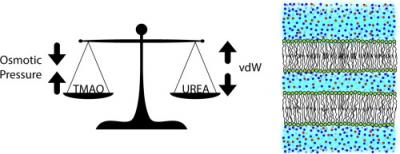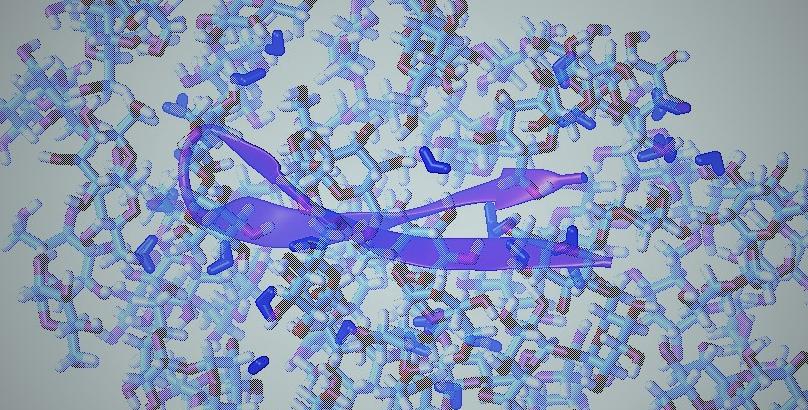Citation:
Abstract:
To cope with stress induced by high salinity and hydrostatic pressure, some marine animals accumulate small organic solutes called osmolytes. Most notable among these osmolytes are the denaturant urea, and trimethylamine N-oxide (TMAO) that is known to stabilize proteins. Although their effects on proteins and nucleic acids have been extensively studied, osmolytes are less commonly studied in the context of lipids, which are a crucial component in many cellular processes. Here we resolve the mechanism for urea’s action on the forces acting between lipid membranes, in the presence and absence of TMAO. We find that unlike the way urea denatures proteins, and by contrast to TMAO, urea does not preferentially interact with net-neutral lipid membranes. Instead, urea modulates the interactions between membranes mainly by weakening the van der Waals attraction between bilayers. Interestingly, regardless of concentration, the effects of urea and TMAO appear to be additive to a large extent, so that the presence of one osmolyte hardly changes the interaction of the other with lipid. Weak non-additive effects are likely due to structural changes in the lipid membrane induced by the osmolytes. Finally, we comment on the potential role of osmolytes acting together in the modification of lipid adhesion and fusion.
Notes:


